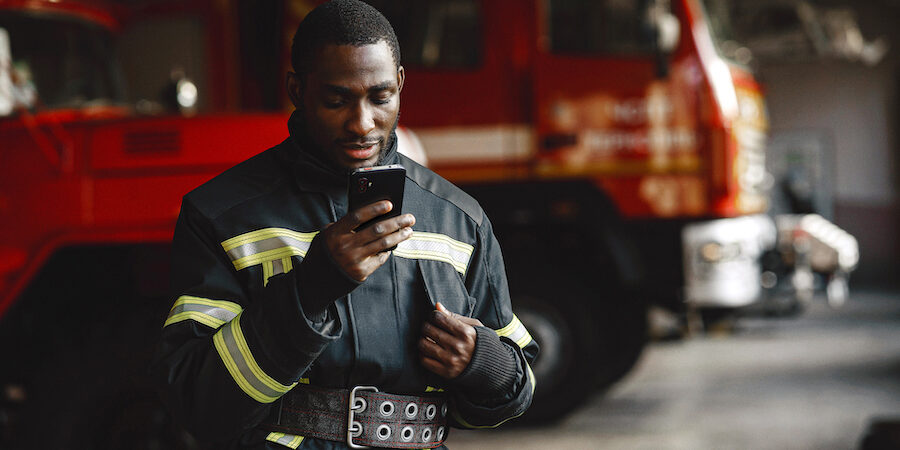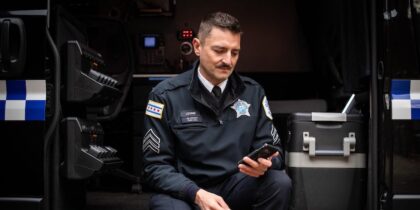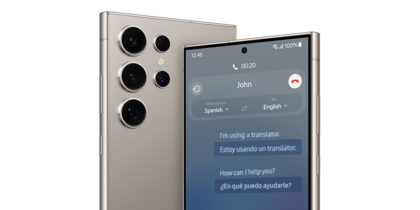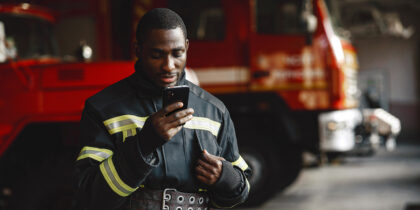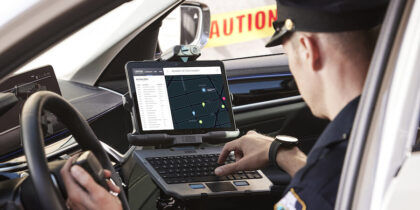Situational awareness is one of the greatest challenges facing incident commanders, whether they are in charge of police, fire rescue, emergency medical services (EMS) or a combination of these agencies at an emergency scene.
Knowing where personnel and equipment are at any given time is critical to making the best command choices throughout an event. Without this knowledge, incident commanders can’t deploy resources effectively. They also can’t stay ahead of emerging threats or protect first responders and the public from harm simply because command lacks a unified operational view of the unfolding scene.
Why LMRs aren’t enough
First developed in the 1930s, land mobile radio (LMR) has come a long way in providing situational awareness for incident commanders. But even with post-9/11 improvements, like Project 25 (P25) radios that are compatible across manufacturer brands, LMRs cannot deliver everything that is possible with today’s mobile technology. Their reliance on dedicated transmission towers limits these radios’ coverage and channel capacity. The data throughput supported by digital LMR, compared to 5G smartphones and tablets, is also minuscule.
That’s not all: LMR-based communications systems are unable to track first responders’ field locations, leaving incident commanders in the dark as to their personnel’s positions and possible needs for assistance. Voice-based LMR communications can also become garbled and hard to understand, while ruggedized laptops running over LMR are not sufficiently mobile for individual officer carriage.
Computer-aided dispatch (CAD) systems that interconnect to LMR can’t share mapping data with officers over radios, nor can they transmit building floor plans, drone footage and other useful graphics. Nor can first responders shoot and share photos and videos using radios.
For these reasons and more, first responder agencies have been turning to secure mobile communications — such as rugged 5G-connected tablets and push-to-talk (PTT) capable smartphones — to vastly improve the scope, reach, and reliability of their situational awareness communications.
Why mobile makes sense
Mobile is a 21st-century technology that is constantly improving in capacity, speed and capability. Mobile offers access to a large range of communications enhancements through mobilized public safety apps.
It’s a ubiquitous, data-rich broadband platform that leverages all of the transmission, application and device functionality advances driven by billions of users. Most importantly, mobile is a technology that today’s first responders intimately understand. It’s an essential part of their daily lives — from home to work and everything in between.
Mobile for first responders
First responders require specialized vehicles and equipment that are more robust and rugged than what consumers use. The same is true for specialized smartphones, smartwatches and tablets that are making their way into public safety and federal applications. These devices are similarly hardened to meet military-grade standards for toughness and all-weather conditions, while the applications they run are laser-focused on enhancing situational awareness in complex emergency situations.
With these mobile devices, dispatch can track every first responder’s GPS location in real time and send help if their heartbeat, as measured by their smartwatch, gets dangerously high. Dispatch can also provide first responders with maps containing driving directions, alerts to obstructions and roadblocks, and drone and ground footage of the incident scene as they come in.
Are other units and agencies responding to the scene? Dispatch can provide the mobile-equipped first responder with mapped data on which vehicles are coming and how far away they are. Have the perpetrators been identified and located? Dispatch can mark this data on the first responder’s mobile maps. Has a first responder filmed a smartphone photo or video of something everyone else needs to know about? This information can be sent to dispatch and then transmitted to the rest of the response team immediately.
Mobile in action: The Corona Fire Department’s ATAK
California regularly experiences fast-moving, hard-to-contain and highly destructive wildfires. The Corona Fire Department (CFD) is one of the agencies fighting them. This is why the CFD has vastly improved their situational awareness by deploying the Android Team Awareness Kit (ATAK). Developed for the U.S. military to improve situational awareness for troops and their commanders, ATAK overlays data from multiple sources and unmanned aerial vehicle (UAV) video onto one 3D mobile map that personnel can view in the field and edit as they go.
The CFD’s ATAK-enabled firefighters now carry Samsung Galaxy smartphones, while their commanders use Galaxy tablets to fully utilize ATAK capabilities when overseeing an incident scene. ATAK boosts their situational awareness and reduces distracting radio chatter, while Samsung Knox encryption3 shields the CFD’s data from unauthorized eyes.
One tough tablet
First responders know how much wear and tear electronics can suffer at an incident scene, and why only the toughest of mobile devices endure. Samsung has been addressing the need for ruggedized devices for years, and its newest iterations, the Galaxy Tab Active5 and Galaxy XCover6 Pro, have the toughness and feature set that incident commanders and first responders need.
The Galaxy Tab Active5 is a ruggedized Android tablet that is MIL-STD-810H-tested2 and is IP68 dust and water-resistant. It has a long-lasting, replaceable battery and a responsive touchscreen even if the user is wearing gloves. The Tab Active5 also comes equipped with 1-year of Knox Suite1 — including defense-grade security, and remote and device management.
Both tablets also support the Samsung DeX mobile-powered computing platform, which is rapidly being adopted for in-vehicle use. By connecting to a keyboard and touchpad, the user instantly has access to a PC-like computing experience that can also support an external monitor.
PTT-capable smartphones
For first responders in the field, Samsung’s Galaxy XCover6 Pro provides rugged performance and is purpose-built for PTT communications.
Like the Tab Active5, it has been tested against MIL-STD-810H standards4 and meets the IP68 standard for resistance to water and dust5. It also features glove-friendly physical buttons that can be programmed for navigation, PTT or to send location information. A long-lasting, replaceable battery means the Galaxy XCover6 Pro can be shared by first responders across shifts. And yes — it’s secured by Samsung Knox as well.
Mobile technology can provide government agencies with unprecedented situational awareness and communications. Devices like the Galaxy Tab Active5 and XCover6 Pro combine advanced capabilities with a field-proven rugged form factor to empower incident commanders and first responders to protect the public like never before.
Discover more ways rugged PTT benefits first responders. Then explore how Samsung for Government can equip your agency with the mobile solutions you need to meet your mission.
1Enterprise Edition devices are sold with one free year of the entire Knox Suite, following that first year, plans are sold based on MSRP or price end user paid, whichever is less. Total duration includes one year of standard limited warranty. Labor-only costs for mechanical and electrical breakdown are covered from date of purchase. Both parts and labor costs are covered after the manufacturer’s warranty expires through the plan term.
2These devices passed military specification (MIL-STD-810H) testing against a subset of 21 specific environmental conditions, including temperature, dust, shock / vibration and low pressure / high altitude. Real world usage varies from the specific environmental conditions used in MIL-STD-810H testing. Samsung does not guarantee device performance in all extreme conditions.
3For the full list of Knox certifications, please visit www.samsung.com/knox
4These devices passed military specification (MIL-STD-810H) testing against a subset of 21 specific environmental conditions, including temperature, dust, shock/vibration, and low pressure/high altitude. Real world usage varies from the specific environmental conditions used in MIL-STD-810G testing. Samsung does not guarantee device performance in all extreme conditions.
5Water resistant in up to 5 feet of water for up to 30 minutes. Rinse residue/dry after wet.
